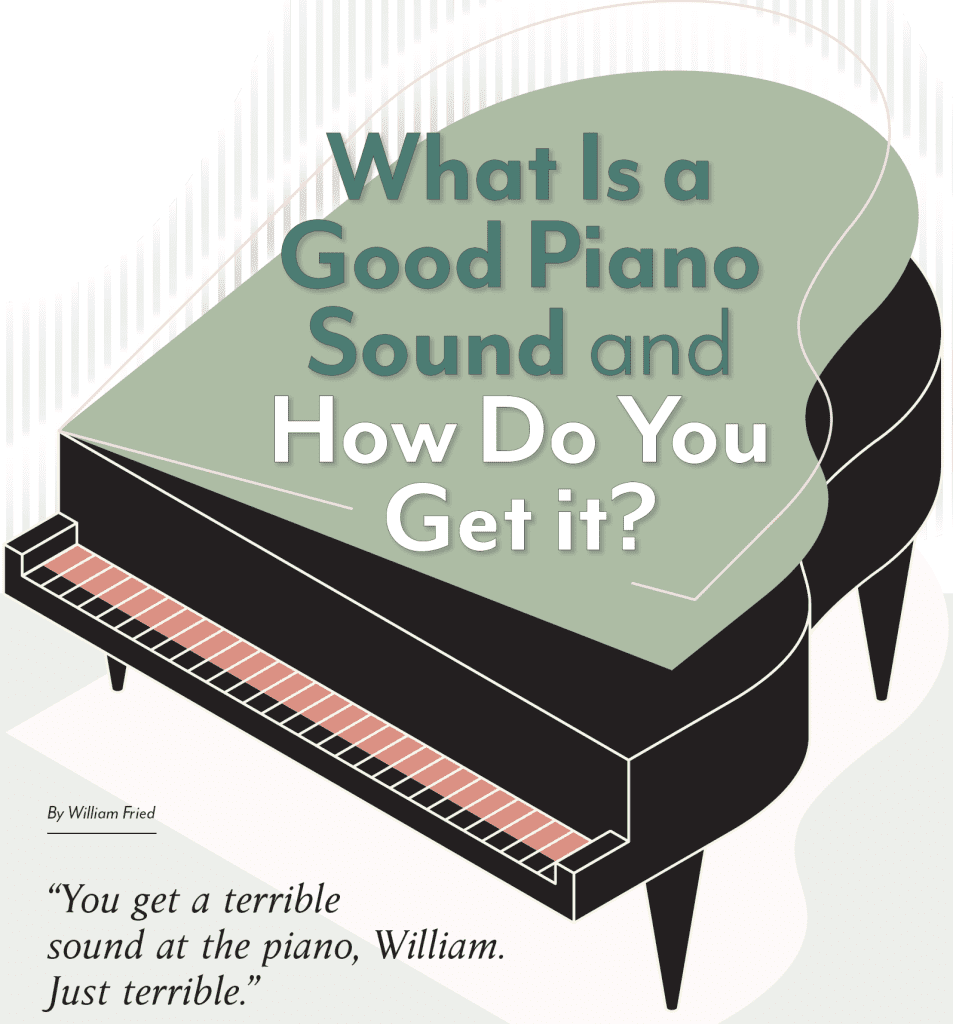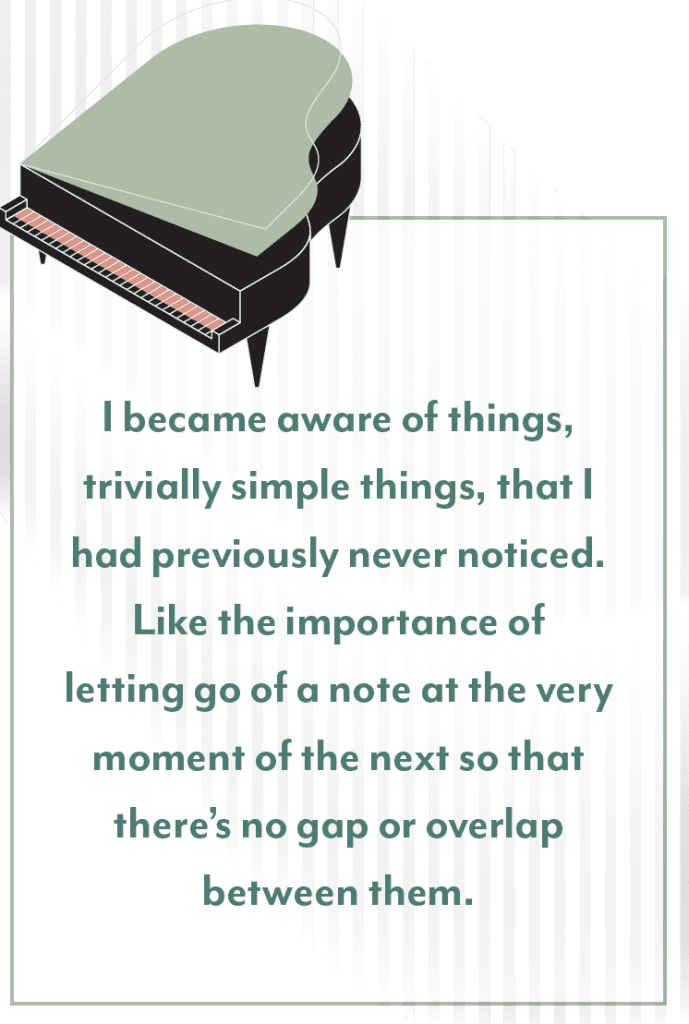We would like to thank William Fried for this insightful article on making a beautiful sound at the piano. Want to learn more about tone production? Check out the latest issue of Piano Magazine. Our new summer issue can be found by clicking here.


“You get a terrible sound at the piano, William. Just terrible.” So spoke my teacher in college, in an admonition I would hear many times over four years. A wonderful person and infinitely generous, but she did not mince words.
“Thanks a lot, Arlene,” I muttered under my breath, before trying the passage again.
She was right, of course. I did get a terrible sound at the piano. I could hear it. Or rather, I could hear the difference when compared with the polished sound in recordings. Why didn’t my Mozart sparkle like that? My playing sounded dull and heavy and forced.
There were reasons, no doubt. Bad technique, certainly. Rapid teenage growth spurts that led to Glenn Gould-esque hunching over the keyboard didn’t help. Nor did the shallow-actioned and unresponsive Kimball baby grand that had been my instrument since childhood. But accurate accounting of blame wasn’t going to solve my problem, and there I was: a college freshman hacking and slashing my way through Chopin and Liszt. And as I progressed, I began to suspect that this was the ceiling holding me back, the main cause of disappointments in competitions and auditions.
And in this, my teacher may have been out of her element. A former child prodigy herself, everything came easy to her. It’s simple: you just listen and hear it and fix it. What’s this kid’s problem? Or maybe she did have the solution and I wasn’t ready to hear it. It’s hard to know with these things.

When I did finally begin to address this problem, help came in the form of a relatively late learner—my teacher in graduate school had initially been a composer before switching to playing the piano full time. Maybe there is something to this. I remember Irish pianist and pedagogue John O’Conor once saying in a masterclass that he attributed his success as a teacher to his figuring things out so late in life. He could still recall the process of learning; it hadn’t happened when he was too young to remember.

Whatever the reason, upon hearing my playing, this new teacher knew exactly what I needed. He prescribed a regimen he credited to his own teacher, the Brazilian pedagogue William Daghlian: Tausig exercises to be practiced slowly, attentive to physical gesture and the conditioning of good habits, with an ear always to the resulting sound. I became aware of things, trivially simple things, that I had previously never noticed. Like the importance of letting go of a note (he called these “releases”) at the very moment of the next so that there’s no gap or overlap between them. Easy to do if you know to do it. And the very process—hearing and correcting little things—became empowering in itself. The more I heard, the more I demanded from my fingers, which found a way to deliver and allow me to hear more and insist on more—a virtuous cycle. And my sound, once this intractable bugbear, began to improve, gradually but noticeably, and it was narcotic—like getting the keys to the kingdom. Like the character in Forrest Gump who, once he sheds his crutches, determines to run everywhere, I was resolved to play with sound. Debussy and others like him became my exclusive focus for quite a while. In retrospect, I might have benefitted from hearing, like Horatio, that there were more things in heaven and earth than dreamt of in my new philosophy, but honestly, I’m not sure I would have listened. That which has eluded us the longest, once we finally attain it, we value above all other things.
We hope you enjoyed this excerpt from William Fried’s article “What is a Good Piano Sound and How Do You Get it?” To read the full article, please click here.
MORE ON TONE PRODUCTION
- MAGAZINE ARTICLE: Creating a Singing Tone at the Piano by Sharon How
- MAGAZINE ARTICLE: How Do You Teach Good Tone to Early-Level Students? by Scott McBride Smith
- MAGAZINE ARTICLE: What practice methods do you use to help students develop technical fluency? by Scott McBride Smith, Chiu-Ling Lin, Rose Grace, and Lucia Unrau
- MAGAZINE ARTICLE: How Do You Teach Cantabile Playing? How Does It Affect Students’ Rhythm? by Bruce Berr and Craig Sale
- MAGAZINE ARTICLE: Tone production: Doing the right things for the right reasons by Chad Twedt
Not yet a subscriber? Join for only $7.99/mo or $36/yr.
NOTES
- Harvard Medical School. “A Brief History of Artificial Intelligence.” Harvard University. Last modified September 28, 2017. sitn.hms.harvard.edu/flash/2017/history-artificial-intelligence/.
- Microsoft. “Workshop: Interact with OpenAI Models.” Microsoft. microsoft.github.io/Workshop-Interact-with-OpenAI-models/llms/.
- OpenAI. “ChatGPT: Conversational AI developed by OpenAI.” OpenAI. openai.com/chatgpt.